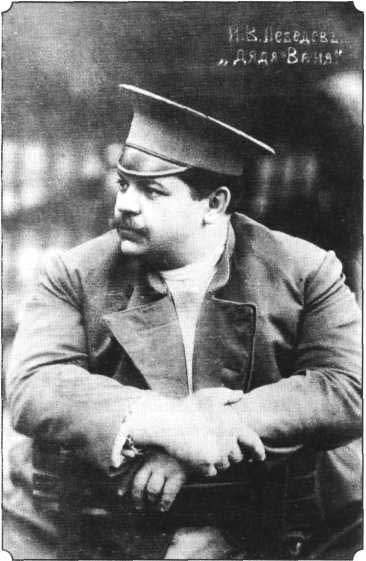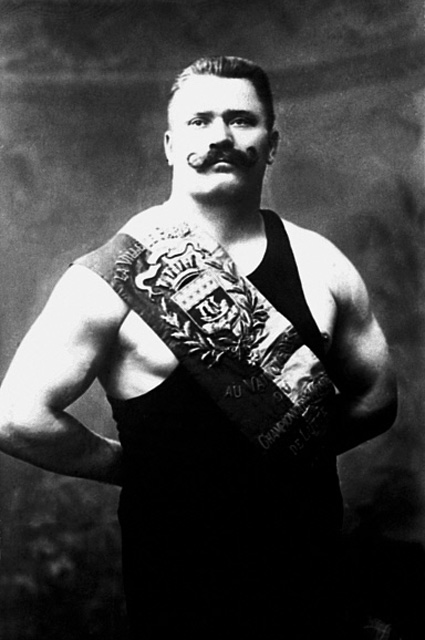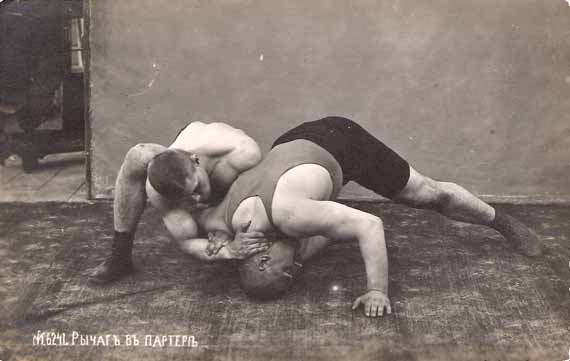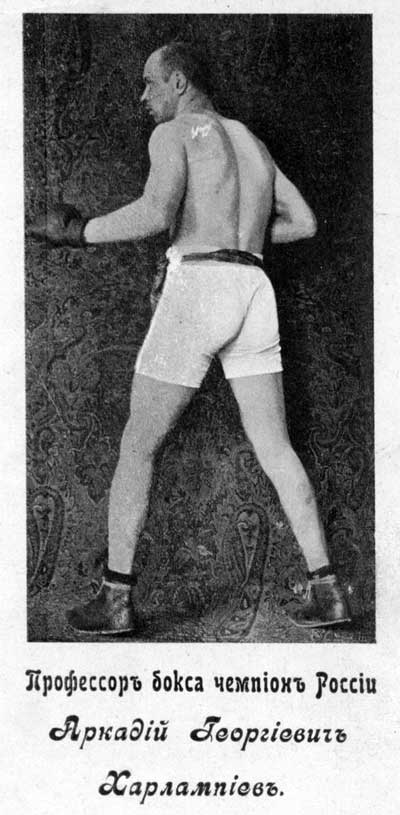This article is in Russian
Hand-to-Hand Combat. History of hand-to-hand combat in Russia and Ukraine. Part 1.
Hand-to-hand combat has a captivating history of development. It accompanied all the peoples living on the Earth through constant wars and conflicts, from the origins of life to the modern era, enabling the best, physically prepared, astute representatives of the human race to survive.
Every historical epoch developed its own, second-to-none method of weaponless self-defense against an armed or physically stronger opponent. Every nation, every civilization had something unique, put to the test in a real battle. The history was swiping all the ineffective into the rubbish bin. Only potent techniques and methods remained.
Depending on the physical, cultural and technical development of the corresponding epoch, some hand-to-hand combat systems had atrophied and disappeared by now, while others, on the contrary, crystallized into harmonious teachings and survived centuries under the pressure of the locomotive of history.
We will not delve into the early periods of hand-to-hand combat systems formation in India and China, and then in Europe and America in the 18th-19th cent. We will only look into the development of hand-to-hand combat on the territories of Russia and Ukraine beginning with the 20th cent.
Hand-to-hand combat in tsarist Russia
Unlike many nations, up until the end of the 19th cent., Tsarist Russia did not have a distinctive, particularly cultivated style of hand-to-hand combat . On the one hand, Russia’s multiculturalism, which allowed uniting a multiplicity of (often mutually hostile) nations speaking various languages and practicing different religions, hindered the development of a single style of martial arts. On the other hand, the serfdom – essentially a slave-owning state – in Russia before 1861, brutally suppressed any attempts of protest, and accordingly, self-defence. Therefore, even if some methods of hand-to-hand combat in the Middle or later ages existed, their holders were exterminated before the systematization of such techniques became possible. Consequently, only when the people of the Russian Empire, constituted by Ukraine as well, became acquainted with the new types of combat, such as French wrestling and English boxing at the end of the 19th and beginning of the 20th cent., the real story of the hand-to-hand fight began.
. On the one hand, Russia’s multiculturalism, which allowed uniting a multiplicity of (often mutually hostile) nations speaking various languages and practicing different religions, hindered the development of a single style of martial arts. On the other hand, the serfdom – essentially a slave-owning state – in Russia before 1861, brutally suppressed any attempts of protest, and accordingly, self-defence. Therefore, even if some methods of hand-to-hand combat in the Middle or later ages existed, their holders were exterminated before the systematization of such techniques became possible. Consequently, only when the people of the Russian Empire, constituted by Ukraine as well, became acquainted with the new types of combat, such as French wrestling and English boxing at the end of the 19th and beginning of the 20th cent., the real story of the hand-to-hand fight began.
Certainly, in no way can we claim that the Slavs (Russians, Ukrainians, Belarusians) were so peaceful not to fight at all . They did, of course. The scuffle was held in great esteem. Still, looking back with modern knowledge, for sure that there was no culture of hand-to-hand combat in the 18th-19th cent. Russia.
. They did, of course. The scuffle was held in great esteem. Still, looking back with modern knowledge, for sure that there was no culture of hand-to-hand combat in the 18th-19th cent. Russia.
Many prominent personalities were engaged in a purposeful development and systematisation of wrestling in Tsarist Russia, including the well known Ivan Vasilievich Lebedev (Professor of Athletics and Gymnastics), and Arkady Georgievich Kharlampiyev (Professor of Boxing).

It was the Tsarist Russia gendarmerie that began both to elaborate a defence system against criminal attacks from separate methods, and to teach its officers detention and convoying skills in the process of police rank preparation . Ivan Vasilievich Lebedev, Professor of Athletics at that time, received an order from the St.Petersburg Police Department to elaborate a methodology for police officers training and teaching them hand-to-hand combat techniques. The technique was worked out to prevent the criminals from using counter-holds. Kicks were borrowed from English boxing, throws and leg kicks were taken from the French wrestling, and pain holds – from the Japanese jiu-jitsu combat. By 1914, Lebedev had trained the first thirty instructors among police ranks. In March 1915, Lebedev’s first book “Self-defence and arrest”, marked “official use only”, was published with the aid of St. Petersburg Police Chief. The publication included all the groundwork.
. Ivan Vasilievich Lebedev, Professor of Athletics at that time, received an order from the St.Petersburg Police Department to elaborate a methodology for police officers training and teaching them hand-to-hand combat techniques. The technique was worked out to prevent the criminals from using counter-holds. Kicks were borrowed from English boxing, throws and leg kicks were taken from the French wrestling, and pain holds – from the Japanese jiu-jitsu combat. By 1914, Lebedev had trained the first thirty instructors among police ranks. In March 1915, Lebedev’s first book “Self-defence and arrest”, marked “official use only”, was published with the aid of St. Petersburg Police Chief. The publication included all the groundwork.
Arkady Georgievich Kharlampiyev – “the father of Russian boxing”, was the one who developed boxing in Tsarist Russia, and brought up a galaxy of famous trainers, the stars who laid the foundation for Soviet boxing . Among them were Konstantin Gradopolov and Mikhail Romanenko, and, of course, his famous son, the founder of the sambo system – Kharlampiyev Anatoly Arkadievich.
. Among them were Konstantin Gradopolov and Mikhail Romanenko, and, of course, his famous son, the founder of the sambo system – Kharlampiyev Anatoly Arkadievich.
An invaluable contribution to the development and popularization of wrestling was made by a nonpareil Ukrainian strongman – Poddubny Ivan Maksimovich . A huge number of fans and admirers of Poddubny’s herculean strength, inspired by his victories in tournaments, went to athletic and gymnastic halls, trying to discover and learn the secrets of wrestling.
. A huge number of fans and admirers of Poddubny’s herculean strength, inspired by his victories in tournaments, went to athletic and gymnastic halls, trying to discover and learn the secrets of wrestling.

In conclusion, we can mention that the process of formation of hand-to-hand combat complex, as a counter-criminal system, began in the times of Tsarist Russia . It was in that period that the first attempts to select the most practical and effective defence and attack techniques were made by choosing from various types of wrestling and sports known at that time.
. It was in that period that the first attempts to select the most practical and effective defence and attack techniques were made by choosing from various types of wrestling and sports known at that time.
In addition to the police and gendarmerie, the military caste – officers – became interested in hand-to-hand combat and wrestling as well. The officers who choose war as a way of life, like no one else, understood the importance of a quick victory over the enemy by any means, including in hand-to-hand combat on the battlefield. Elements of hand-to-hand combat and self-defence were studied at lower rank recruit training as part of bayonet fighting and fencing lessons in infantry and artillery schools for cadets and officers.
The revolution was upcoming.
При копировании материала просим ссылаться на источник https://nipponkempo.com.ua/article/hand-to-hand-combat-in-tsarist-russia/. Правила публикации здесь. В противном случае, мы обязательно выявим плагиат и будем обращаться в DMCA Google.







